#isabel ii de espana
Explore tagged Tumblr posts
Photo

Vicent López Portaña (Spanish, 1772–1850) Isabel II de España, c.1843-44 Madrid, Ministerio de Hacienda
#Vicent López Portaña#spanish art#spanish#spain#classical art#isabel ii de espana#espana#western civilization#art#european art#europe#europa#1700s#1800s#royalty#royal#fine arts#fine art#oil painting#queen#spanish queen
90 notes
·
View notes
Text

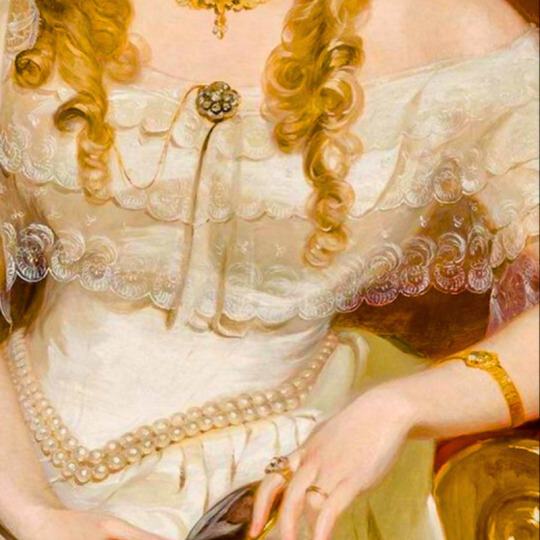



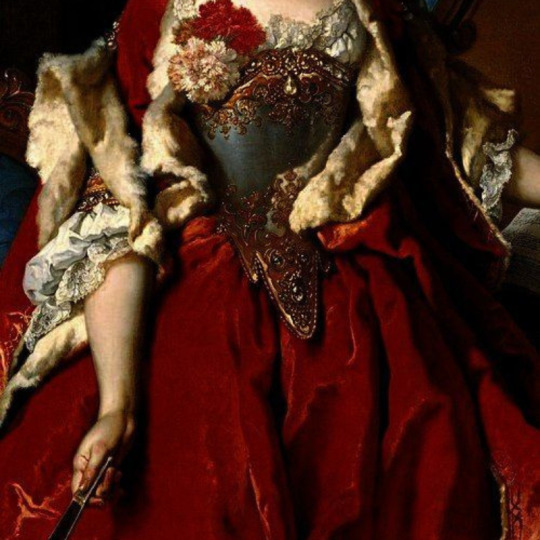

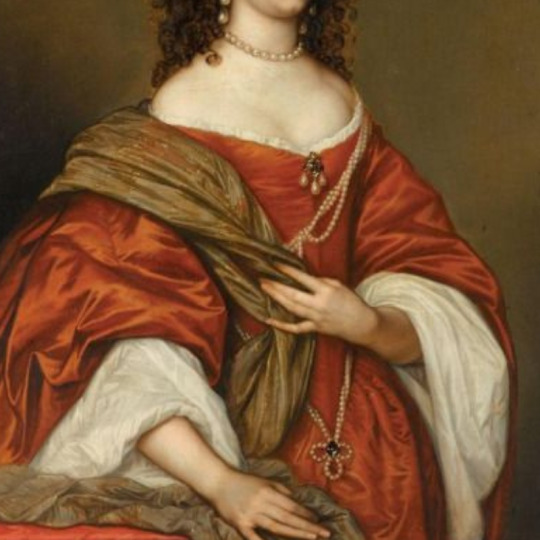
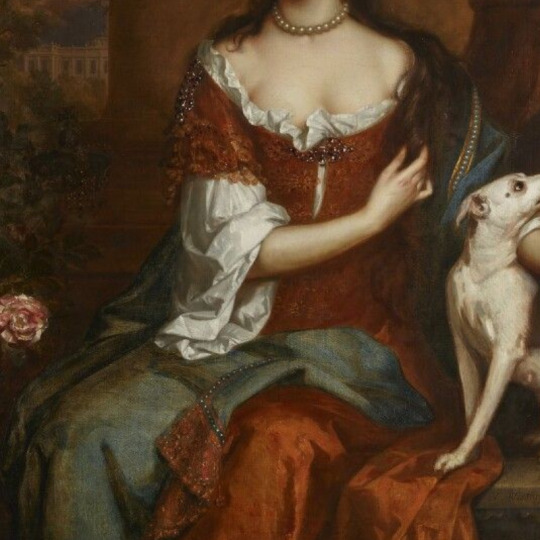


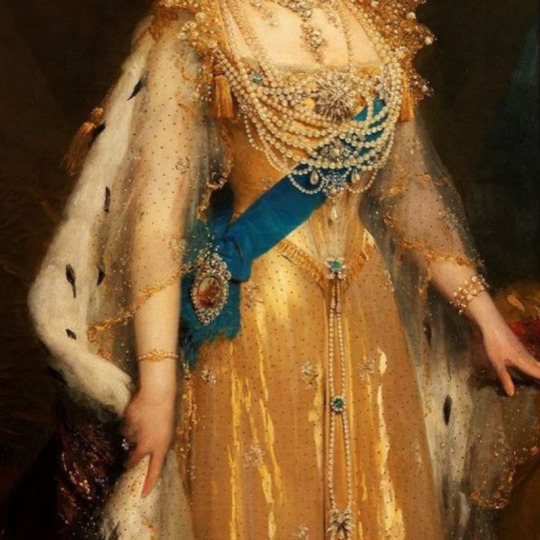
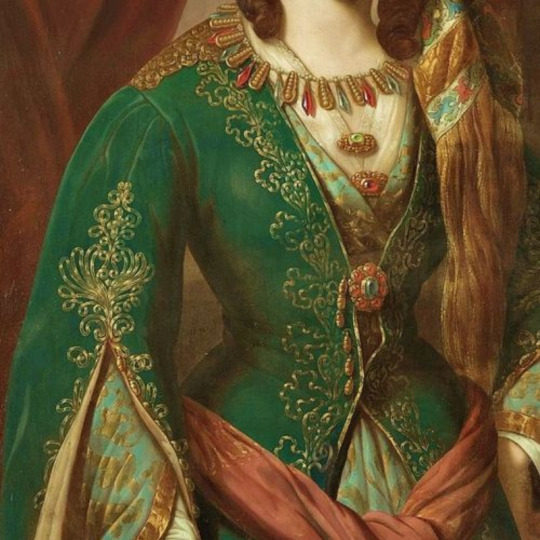

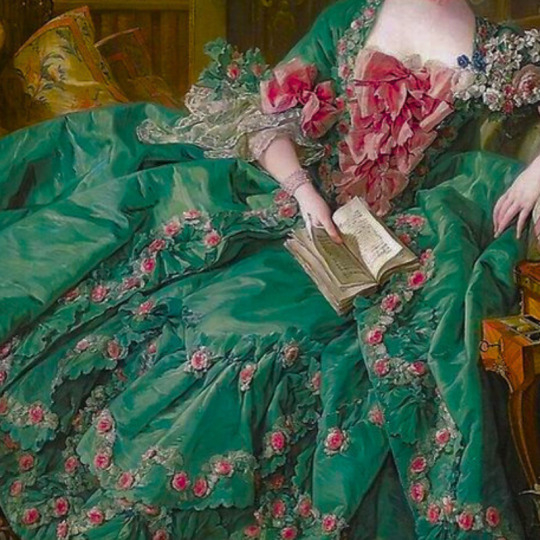
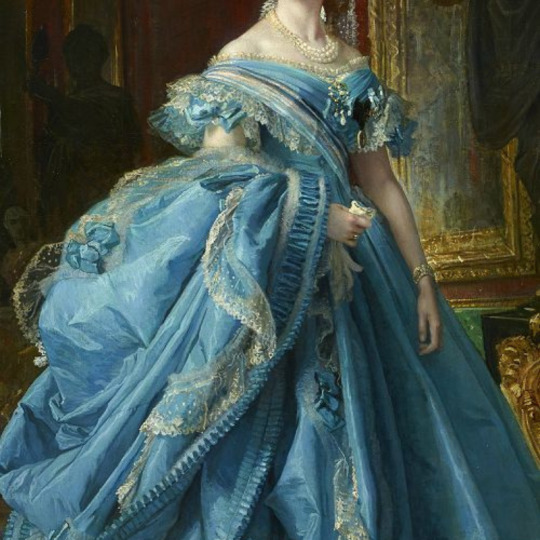
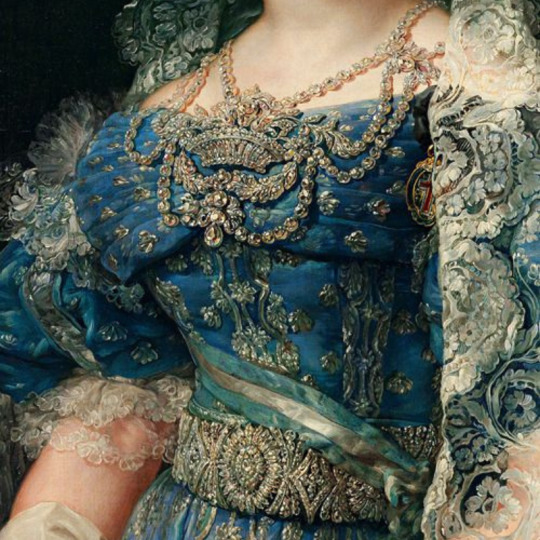
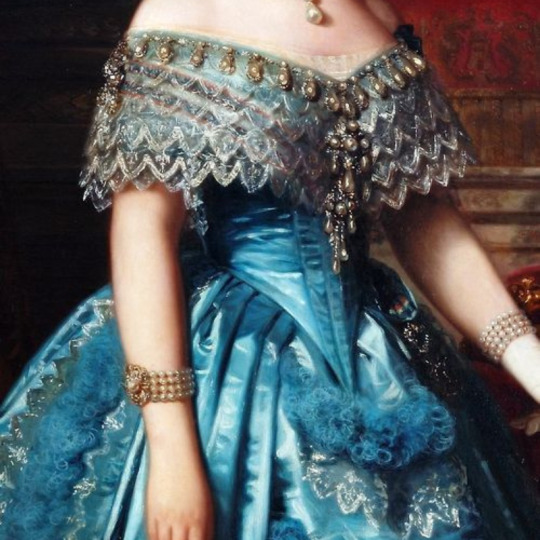


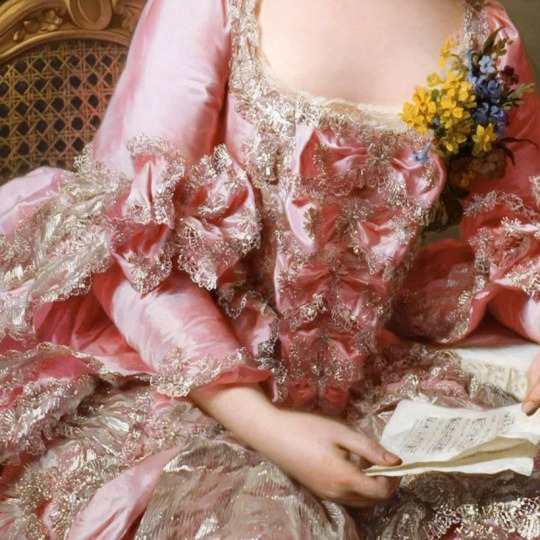

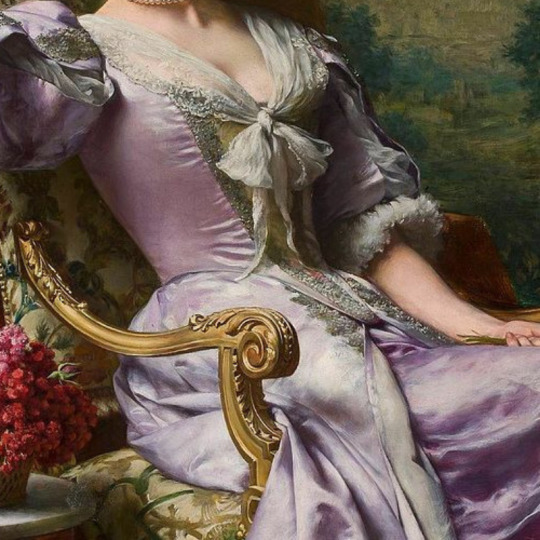



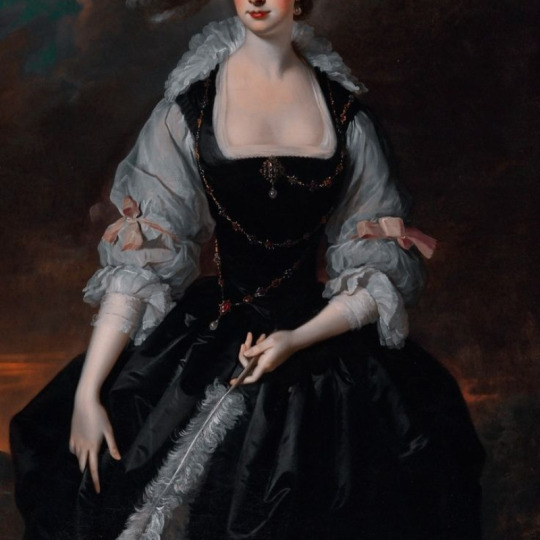
dresses in art
#portrait of the hon. mrs harold by john collier#unknown i cant find this one#portrait of josephine stieler as a bride by joseph karl stieler#portrait of frances anne vane by alexandre jean dubois#portrait of isabelle antoinette barones sloet van toutenberg by nicaise de keyser#portrait of marguerite de seve by nicolas de largillere#portrait of emilia wlodkowska by jozef simmler#portrait of a lady by adriaen hanneman#mary of modena by willem wissing#esther and ahasuerus by artemisia gentileschi#alexandra feodorovna by a malyukov#don't know the artist but its supposed to be the coronation dress of queen alexandra#woman in turkish dress by paul emil jacobs#portrait of juliane by johann heinrich tischbein#portrait of madame de pompadour by francois boucher#princess isabella of asturias vicente palmaroli#maria christina de borbon-dos sicilas reina de espana by vicente lopez y portana#isabella ii queen of spain by federico de madrazo y kuntz#afternoon tea for three by frederic soulacroix#princess maria carolina augusta of bourbon by franz xaver winterhalter#marie suzanne giroust by alexander roslin#the new bracelet by frans verhas#a lady in a lilac dress by wladysaw czachorski#a gust of wind by gaetano bellei#maria grafin zu munster by harry von hente#retrato de dona antonia roca y mestre by angel maria cortellini#frances courtenay by thomas hudson#i loved colorcoding this and i used some from my last edit#art history#history
2K notes
·
View notes
Text
After his mother’s death, the prince (Philip) turned his devotional attention increasingly to his namesake, St Philip, on whose feast day he became a knight of the Golden Fleece (1533) and recovered from smallpox (1536) - events which showed that the saint was ‘looking out’ for him. On that same day in 1539 his mother died, a coincidence that further reinforced Philip’s devotion to his patron, because it suggested further that the saint had intervened to escort his mother to heaven. Henceforth he would combine celebration of his saint’s day with commemoration of his mother’s death.
Imprudent King: A New Life of Philip ii by Geoffrey Parker. Page 84
#philip ii of spain#philip ii#felipe ii#felipe ii de espana#Isabella of Portugal#Isabel de Portugal#Catholic#?#I think it’s an appropriate tag considering the subject#history#Spanish history#now this may be a bit out of place since I didn’t make this post around the specific day of the quote#buuuuut#I’ve elected to pretend it doesn’t matter
6 notes
·
View notes
Photo

Moneda de España Isabel II 1 Real 1852 Barcelona. Plata. 35,00 €. 1 real 1852 En el Reverso el escudo con corona real y la leyenda “REINA DE LAS ESPAÑAS” y 1 Rl. En el anverso, Isabel II con la leyenda “ISABEL 2ª POR LA GRACIA DE DIOS Y LA CONST.” 1852. Composición: Plata 900 milésimas. Peso: 1,31 gr. Diámetro: 15 mm. Categoría: Monedas Isabel II. Más información en: https://www.todonumismatica.com/moneda-de-espana-isabel-ii-1-real-1852-barcelona-p-23612.html
0 notes
Text
CLASE 02 - BRASIL - EL 22 DE ABRIL DE 1500
¡Hola! ¿Qué tal? Bienvenidos al Curso Portugués para Hispanohablantes.
¿QUÉ SE CONOCE DEL DESCUBRIMIENTO DE BRASIL?
¿Ya lo sabías? Hubo la posibilidad de BRASIL haber sido colonia de ESPAÑA. Pero, ¿cómo fue eso?
En junio de 1494 los Reyes Católicos firmaron el Tratado de Tordesillas (actual provincia de Valladolid) con Juan II de Portugal, el hijo de Alfonso V. El fin era acabar con las hostilidades que podían provocar una nueva guerra entre vecinos y perjudicar la colonización. De este modo, delimitaron una línea de polo a polo, 370 leguas al oeste de las islas de Cabo Verde, quedando el hemisferio oriental para la Corona de Portugal y el hemisferio occidental para la Corona de Castilla.
Este fue el motivo por el que BRASIL fue colonia portuguesa y no española, es que ese territorio se encontraba dentro de los límites pactados con Isabel y Fernando en el TRATADO DE TORDESILLAS. Ese es el motivo por el que Brasil.
Desde el siglo XV los marinos portugueses se habían convertido en excelentes navegantes, gracias al impulso dado a la navegación por Enrique el Navegante y su ESCUELA DE SAGRES, Bartolomé Díaz había doblado el cabo de las Tormentas (Buena Esperanza) en el extremo sur de África y Vasco de Gama, siguiendo la misma ruta, había llegado hasta la India en 1498.
Sin embargo, al tener noticias en la corte de Portugal de los descubrimientos colombinos en favor de la Corona de Castilla, se dispusieron a realizar sus propias exploraciones y colonizaciones, sobre todo porque en virtud del Tratado de Tordesillas (1494), firmado por las dos naciones descubridoras y arbitrado por el Papa Alejandro VI, correspondían a Portugal todas las tierras al este de un meridiano imaginario que pasaba 160 millas al oeste de Cabo Verde y dividía al globo terráqueo por la mitad.
Muy pronto los portugueses llamaron al territorio saliente de SUDAMÉRICA que caía dentro de su dominio «el Brasil», debido a la madera tintórea que se conocía como palo brasil y que por entonces constituía la principal riqueza de la región.
En el mismo año en que se iniciaba el siglo XVI, Álvarez Cabral, navegante enviado a la India por el rey portugués Manuel el Afortunado, se desvió de la ruta africana - según se cree, intencionadamente - y llegó a BRASIL, donde fundó una colonia que, con el tiempo, sería la base de la expansión portuguesa en aquel inmenso territorio.
Antes de la llegada de los portugueses el actual Brasil estaba habitado por cerca de tres millones de indígenas que conformaban diversos grupos tribales. No constituían un conjunto cohesionado o definido, mucho menos centralizado, como sucedía en otras regiones de América.
El explorador portugués nacido en Belmente, Pedro Álvarez de Cabral, fue el primer europeo en pisar tierras brasileñas en 1500. Al mando de 13 navíos y 1.500 hombres, descubrió unas playas sobre el océano Atlántico, a las que llamó Tierras de Vera Cruz tras tomar posesión de ellas en nombre de Manuel I. Luego, siguió su trayecto hacia Calicut. Brasil tuvo al comienzo un interés maderero y de enlace comercial, hasta que el descubrimiento de Álvarez fue finalmente retomado en 1515.
Gonçalo Coelho, Fernando de Noronha y Américo Vespucio, exploraron las extensas costas brasileñas, determinando claramente que éstas se encontraban dentro de la jurisdicción del rey de Portugal, de acuerdo con el tratado de Tordesillas.
La verdadera COLONIZACIÓN DE BRASIL tuvo que esperar hasta la década de 1530, en que se establecieron varias factorías a lo largo de la costa. La primera fue la de São Vicente, fundada por una expedición al mando de Martín Alfonso de Sousa. Aunque esta tierra fue originalmente llamada Veracruz, pronto adoptó el nombre actual, debido a que el llamado palo de Brasil producía un apreciado tinte vegetal, que constituyó durante la primera mitad del siglo XVI el más importante producto exportado de estas tierras.
Hacia 1532, los colonos portugueses, principalmente «bandeirantes» (aventureros paulistas) y jesuitas, avanzaron a lo largo del valle del río San Francisco.
En 1534, la región fue dividida en DOCE CAPITANÍAS HEREDITÁRIAS, entregadas a nobles portugueses. Sin embargo, este sistema fracasó, pues cuatro capitanías no fueron colonizadas y otras cuatro fueron destruidas por ataques indígenas, resultando solamente rentables Pernambuco y São Vicente.
Cabují, el volcán extinto que reivindica el descubrimiento de Brasil.
Varios historiadores e investigadores reivindican que el PICO DE CABUJÍ, el único volcán extinto en Brasil que conserva su forma original, fue el punto que avistaron los primeros portugueses que llegaron al país en 1500, un hecho que por siglos es atribuido al Monte Pascoal, en Bahía.
Localizado cerca del litoral de RÍO GRANDE DO NORTE, en el extremo NORESTE del país, el pico de Cabují es el único de los varios volcanes sin actividad que mantiene intacta su forma y hoy su nombre es más conocido por los brasileños por esa reivindicación histórica.
El primero en levantar esa hipótesis fue el investigador Lenine Pinto, profesor de la Universidad Federal de Río Grande do Norte - UFRN, que en 2012 publicó el libro "Reinvención del Descubrimiento", en el que afirma que Cabují es el Monte Pascoal y que el vecino municipio de Touros corresponde a la ciudad de Porto Seguro.
A pesar de las teorías que indican que el portugués Duarte Pacheco Pereira avistó, sin tocar tierra, lo que hoy es Brasil en 1498. Alvares Cabral era uno de los comandantes de la expedición portuguesa de Vasco da Gama que buscaba una ruta diferente para llegar a India, circundando el continente africano, y de acuerdo con los relatos históricos avistó primero el Monte Pascoal y luego desembarcó en lo que hoy es la ciudad de Porto Seguro.
El ingeniero civil e investigador Manuel Oliveira Cavalcanti, que acaba de publicar "1500: De Portugal al saliente potiguar", un libro que recoge los estudios a partir del viaje del propio autor al país ibérico para conocer con más detalles la "Carta del Descubrimiento", el documento oficial portugués sobre Brasil.
"Hay una tesis de un historiador sobre que el descubrimiento de Brasil fue en Río Grande do Norte y sobre esa tesis seguí", dijo a Efe Oliveira Cavalcanti, quien recopiló el trabajo de Pinto y reforzó la teoría con más datos basados en la interpretación de los relatos de los portugueses.
De acuerdo con el autor, "hay nuevos hechos, nuevas evidencias y el libro muestra eso, que Brasil fue descubierto en Río Grande do Norte. Fueron dos años de investigación".
"Estuve en Portugal, en la Torre do Tombo, e investigué decenas y decenas de libros, investigué las corrientes marítimas, la plataforma continental, las corrientes aéreas y por ahí va todo el trabajo para demostrar esa teoría", apuntó.
Pinto, Oliveira Cavalcanti y otros investigadores se apoyaron también en una expedición conjunta realizada entre los Gobiernos de Brasil y Portugal para la celebración de los 500 años del descubrimiento, en la que los navegantes utilizaron la ruta, condiciones y equipos similares a los empleados por Alvares Cabral.
Para llegar el 22 de abril de 2000 a Bahía, un Estado más al sur de Río Grande do Norte, la expedición necesitó de un motor auxiliar más potente, pues en las mismas condiciones de 1500 sólo conseguirían tocar suelo brasileño, en esa fecha, en Touros.
Con coordenadas de 5° 42' 22" S 36° 19' 15" y una altitud de 590 metros, el pico de Cabuji, cuyo nombre indígena tup��-guaraní significa "pecho de muchacha", también es llamado de Serrote da Itaretama, que en la misma lengua se traduce como "sierra de muchas piedras".
El pico forma parte del Parque Ecológico Cabugi (con 'g'), una extensa área de preservación vigilada por el Gobierno regional y que cada vez cuenta con más turistas nacionales y extranjeros que buscan una opción de aventura diferente a la ofrecida por las paradisíacas playas en esa zona. (Ney Douglas).
REFERENCIAL BIBLIOGRÁFICO:
Fuente: https://brasilmasquefutbol.com/2015/04/04/por-que-brasil-fue-colonizado-por-portugal-y-por-espana/
Fuente: https://mihistoriauniversal.com/edad-moderna/conquista-de-brasil/
Fuente: https://historiaybiografias.com/explorar_elsur/
Fuente: https://www.efe.com/efe/america/sociedad/cabuji-el-volcan-extinto-que-reivindica-descubrimiento-de-brasil/20000013-3613989
Ahora ya sabes cómo surgió el GIGANTE de Sudamérica y que por poco los brasileños hubiera sido más un país de lengua española en América. Sigues estudiando esta lengua tan hermosa que es el PORTUGUÉS.
MUITO AGRADECIDO PELA ATENÇÃO
C O N T A T O:
- Zoom / Skype: [email protected]
- Telegram: https://t.me/Jetenol
- Tumblr: < https://jetenol.tumblr.com/ >.
- Instagram: < https://www.instagram.com/jetenolcorreia/?hl=pt-br >.
- Facebook: < https://www.facebook.com/pg/Jetenol/groups/?ref=page_internal >.
¡MUCHAS GRACIAS!

1 note
·
View note
Text
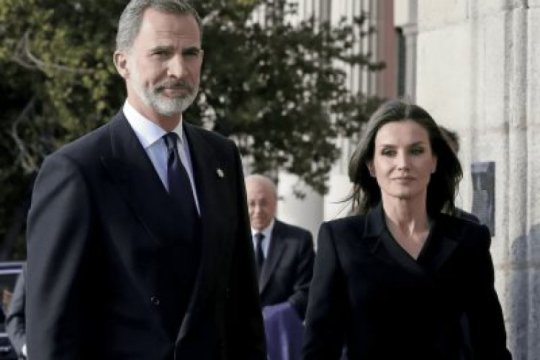
Noticia | Reyes de España visitarán capilla ardiente Isabel II https://aguajero.com/reyes-de-espana-visitaran-capilla-ardiente-isabel-ii
0 notes
Link
0 notes
Note
Hello, Felipe II of Spain I know that he was only in love with Isabel, although he might have a special affection for Ana. ¿What do you think?
My thoughts are similar to yours. I think he loved them both but his relationship with Isabel had more passion, being closer to what we would call today “falling in love” that turns into love. Whereas his feelings for Ana seem to me born out of her fulfilling his expectations of what he wanted to see in a wife, from behaviour and appearance to bearing him sons and being a good stepmother to his daughters. And I found historian Henry Kamen quoting Philip that ‘the great love there is between us [him and Ana]’.
(You know, your question spurned me to reread the parts of my books on Philip that deal with his relationship with Isabel and Ana, and I noticed that the authors don’t dwell that much on them. Also, it made me to muse about Isabel, and I started to feel bad for her. To have five pregnancies in seven years and be eventually killed by them at the age of 23 is such a sad fate. I don’t blame Philip for that but… poor girl!)
Edit: I discovered that there is a book in Spanish Isabel de Valois, reina de Espana: Una historia de amor y enfermedad by A.Martinez Llamas. If you (or anyone else who reads this post) have read it I would like to hear your thoughts on it.
5 notes
·
View notes
Audio
querida anita smith , lamento mucho que hasta hoy no podamos encontrarnos otra vez. La verdad es que soy un scout. Voluntario. Y un marino en reservas navales. Dependo de antiguos y mayores jefes como los caballeros scouts del peru, los insignias de madera de mi antiguo grupo scout. Lima 29. Gracias a ellos pude viajar desde lima peru al 19 jamboree scout mondial chile 1999.Respecto a mi situacion en la marina de guerra del peru, como estamos en una situacion de paz me encuentro en estado de seleccionado. Espero que el presidente actual pueda otorgarme el grado de teniente o capitan, pues tengo 53 anos de edad y un titulo de economista. La situacion de mis hermanos es muy similar, aunque mis dos hermanos tienen modestos trabajos.Querida anita. Smith. Te recuerdo con mucho amor y afecto desde que nos conocimos en la plaza mayor o plaza de armas de lima. Te segui camino a la marital sociedad de la basilica catedral de lima. Eres una mujer muy bella y yo no soy precisamente un principe, pero te tengo un modesto y silencioso amor. Te escribo al buzon de correos del arzobispado de lima, ruego a dios por ti y por mi.De todo corazon le pido a dios y a jesuscristo que nos proteja. Estoy bailando en la oscuridad contigo, pues tu ya norespondes mis cartas, notas y poemas. Tal vez estoy cometiendo un error en seguirte, pues no se si eres soltera, o casada y si tienes hijos. Me gusto mucho escuchar tu sonrisa por telefono, fue lo que mas me enamoro de ti. Aprendi a vivir con tu sonrisa y aprendi a tener esperanza que te volveria a encontrar.Anita. Smith tu eres el amor, el amor mas profundo de mi corazon. Espero que jesuscristo perdone mis errores y pecados de joven y me vea como el hombre adulto que soy. El amor todo lo puede, todo lo espera, todo lo soporta......Que nuestros mundos se unan en un solo y verdadero amor. Y si no me quieres por que ahun no me conoces lo suficiente, con todo el dolor de mi corazon te dejare la libertad para que seas feliz con otro hombre. Si estas en united states of america saludos al presidente donald trump que esta hospitalizado, que se cure pronto. Si estas en londres ,london, saludos a queen elizabeth ii, reina isabel. Ii.Desde lima peru, que es un pais independiente de una cultura ancestral como el poderoso imperio de los incas, con la llegada de los espanoles al peru, guardo un afecto especial por nuestra madre patria que es espana, spain.Se despide de ti, desde mi modesto hogar en el distrito de san martin de porres de lima peru ,,,,,,, Jose. Roger leiva pinedoUniversidad nacional mayor de san marcosUniversidad de santiago de chilePontificia universidad catolica del peru Un enorme. Beso.
0 notes
Text

Emilio Sala y Francés (Spanish, 1850-1910) Expulsión de los judíos de España (año de 1492), 1889 Museo Nacional del Prado
#Emilio Sala y Francés#Emilio Sala#1800s#expulsion de los judios de espana#world history#expulsion of jewish people from spain#art#fine art#european art#classical art#europe#european#fine arts#oil painting#europa#mediterranean#Isabella I of Castile#king aragon#ferdinand ii of aragon#queen isabel#king#queen#spanish king#spanish queen#1400s
66 notes
·
View notes
Photo

Hispanic Heritage Month, established in 1988, runs from September 15 through October 15. It recognizes and celebrates the contributions of Hispanic and Latino Americans have made to the United States. Florida in particular has a strong Hispanic background including the oldest inhabited city in the U.S., St. Augustine, which was founded in 1565 by the Spanish.
Join the UCF Libraries as we celebrate our favorite Hispanic authors and subjects with these 20 suggestions. Click on the Keep Reading link below to see the full list of books along with their descriptions and catalog links.
PS. The free museum day hosted by the Smithsonian is on Saturday, September 23 this year, and includes admission to the Tampa Bay History Center which is currently featuring Gateways to the Caribbean: Mapping the Florida-Cuba Connection. Get a free ticket to visit here.
For a full list of participating Florida Museums, click here.
Agua Santa = Holy Water by Pat Mora Drawing on oral and lyrical traditions, this book honors the grace and spirit of mothers, daughters, lovers, and goddesses. From a tribute to Frida Kahlo to advice from an Aztec goddess, the poems explore the intimate and sacred spaces of borderlands through many voices: a revolutionary, a domestic worker, a widow. Suggested by Andrew Hackler, Circulation
Aleph by Jorge Luis Borges "The Aleph" is a short story by the Argentine writer and poet Jorge Luis Borges. First published in September 1945, it was reprinted in the short story collection, The Aleph and Other Stories, in 1949, and revised by the author in 1974. Suggested by Christina Wray, Digital Learning & Engagement Librarian
Aloud: voices from the Nuyorican Poets Café edited by Miguel Algarín and Bob Holman Compiled by poets who have been at the center of the Nuyorican Poets Cafe in New York City, Aloud! showcases the work of the most innovative and accomplished word artists from around America. Suggested by Christina Wray, Digital Learning & Engagement Librarian
Chol (Mayan) folktales: a collection of stories from the modern Maya of Southern Mexico by Nicholas A. Hopkins and J. Kathryn Josserand Chol (Mayan) Folktales deftly combines high-quality and thoughtfully edited transcriptions of oral storytelling with translation and narrative analysis, documenting and analyzing a trove of Chol folklore. The work provides a look into the folktale culture of the contemporary Maya presented with a rare and innovative theoretical framework. The rich Chol oral narrative tradition is represented by eleven stories, each printed in the original language of the storytellers with parallel English translations and accompanied by a brief introduction that provides the relevant cultural and mythological background. Included with eight of the stories is a link to an audio clip of the tale told aloud in the Chol language. In addition, Chol (Mayan) Folktales introduces a model for the analysis of narratives that can be used to demonstrate the existence of a tradition of storytelling applicable to other Maya lore, including Classic period hieroglyphic texts. Suggested by Adriana Neese, Circulation
Daughter of Fortune by Isabel Allende Daughter of Fortune is a sweeping portrait of an era, a story rich in character, history, violence, and compassion. In Eliza, Allende has created one of her most appealing heroines, an adventurous, independent-minded, and highly unconventional young woman who has the courage to reinvent herself and to create her hard-won destiny in a new country. Suggested by Andrew Hackler, Circulation
Esperanza Rising by Pam Muoz Ryan Esperanza thought she'd always live with her family on their ranch in Mexico--she'd always have fancy dresses, a beautiful home, and servants. But a sudden tragedy forces Esperanza and Mama to flee to California during the Great Depression, and to settle in a camp for Mexican farm workers. Esperanza isn't ready for the hard labor, financial struggles, or lack of acceptance she now faces. When their new life is threatened, Esperanza must find a way to rise above her difficult circumstances--Mama's life, and her own, depend on it. Suggested by Peggy Nuhn, Regional Campuses
Gabi, a Girl in Pieces by Isabel Quintero Gabi Hernandez chronicles her last year in high school in her diary: college applications, Cindy's pregnancy, Sebastian's coming out, the cute boys, her father's meth habit, and the food she craves. And best of all, the poetry that helps forge her identity. Suggested by Sandy Avila, Subject Librarian
How to Leave Hialeah by Jennine Capó Crucet Coming to us from the predominantly Hispanic working-class neighborhoods of Hialeah, the voices of this steamy section of Miami shout out to us from rowdy all-night funerals and kitchens full of plátanos and croquetas and lechón ribs, from domino tables and cigar factories, glitter-purple Buicks and handed-down Mom Rides, private homes of santeras and fights on front lawns. Calling to us from crowded expressways and canals underneath abandoned overpasses shading a city’s secrets, these voices are the heart of Miami, and in this award-winning collection Jennine Capó Crucet makes them sing. Suggested by Sandy Avila, Subject Librarian
La Perdida by Jessica Abel Jessica Abel’s evocative black–and–white drawings and creative mix of English and Spanish bring Mexico City’s past and present to life, unfurling Carla’s dark history against the legacies of Burroughs and Kahlo. A story about the youthful desire to live an authentic life and the consequences of trusting easy answers, La Perdida–at once grounded in the particulars of life in Mexico and resonantly universal–is a story about finding oneself by getting lost. Suggested by Sara Duff, Acquisitions & Collections
Mexican Phoenix: Our Lady of Guadalupe: image and tradition across five centuries by D.A. Brading In 1999 Pope John Paul II proclaimed Our Lady of Guadalupe a patron saint of the Americas. According to oral tradition and historical documents, in 1531 Mary appeared as a beautiful Aztec princess to Juan Diego, a poor Indian. Speaking to him in his own language, she asked him to tell the bishop her name was La Virgen de Guadalupe and that she wanted a church built on the mountain. During a second visit, the image of the Virgin miraculously appeared on his cape. Through the centuries, the enigmatic power of this image has aroused such fervent devotion in Mexico that it has served as the banner of the rebellion against Spanish rule and, despite skepticism and anticlericalism, still remains a potent symbol of the modern nation. In Mexican Phoenix, David Brading traces the intellectual origins, the sudden efflorescence, and the theology that has sustained the tradition of Our Lady of Guadalupe. Suggested by Adriana Neese, Circulation
Night Prayers by Santiago Gamboa A thrilling literary novel about crime and corruption in Latin America told in alternating voices and perspectives, Night Prayers is the story of Manuel, a Colombian philosophy student arrested in Bangkok and accused of drug trafficking. Unless he enters a guilty plea he will almost certainly be sentenced to death. But it is not his own death that weighs most heavily on him but a tender longing for his sister, Juana, whom he hasn't seen for years. Before he dies he wants nothing more than to be reunited with her. Fans of both Roberto Bolaño and Gabriel García Márquez will find much to admire in this story about the mean streets of Bogotá, the sordid bordellos of Thailand, and a love between siblings that knows no end. Suggested by Sara Duff, Acquisitions & Collections
Popol Vuh: The Definitive Edition of the Mayan Book of the Dawn of Life and the Glories of Gods and Kings translated by Dennis Tedlock Popol Vuh, the Quiché Mayan book of creation, is not only the most important text in the native languages of the Americas, it is also an extraordinary document of the human imagination. It begins with the deeds of Mayan gods in the darkness of a primeval sea and ends with the radiant splendor of the Mayan lords who founded the Quiché kingdom in the Guatemalan highlands. Originally written in Mayan hieroglyphs, it was transcribed into the Roman alphabet in the sixteenth century. This new edition of Dennis Tedlock's unabridged, widely praised translation includes new notes and commentary, newly translated passages, newly deciphered hieroglyphs, and over forty new illustrations. Suggested by Tim Walker, LibTech
Shadowshaper by Daniel José Older Sierra Santiago planned an easy summer of making art and hanging out with her friends. But then a corpse crashes their first party. Her stroke-ridden grandfather starts apologizing over and over. And when the murals in her neighborhood begin to weep tears... Well, something more sinister than the usual Brooklyn ruckus is going on. With the help of a fellow artist named Robbie, Sierra discovers shadowshaping, a magic that infuses ancestral spirits into paintings, music, and stories. But someone is killing the shadowshapers one by one. Now Sierra must unravel her family's past, take down the killer in the present, and save the future of shadowshaping for generations to come. Suggested by Sara Duff, Acquisitions & Collections
Stories from Spain = Hisorias de Espana by Genevieve Barlow and William N. Stivers In Stories from Spain/Historias de Espana, we've placed the Spanish and English stories side by side--lado a lado--so you can practice and improve your reading skills in your new language while enjoying the support of your native tongue. This way, you'll avoid the inconvenience of constantly having to look up unfamiliar words and expressions in a dictionary. Read as much as you can understand, and then look to the facing page for help if necessary. As you read, you can check your comprehension by comparing the two versions of the story. You'll also find a bilingual vocabulary list at the end of the book, so you'll have a handy reference for new words. Suggested by Adriana Neese, Circulation
The contemporary Spanish-American novel: Bolaño and after edited by Will H. Corral, Juan E. De Castro, Nicholas Birns The Contemporary Spanish-American Novel provides an accessible introduction to an important World literature. While many of the authors covered―Aira, Bolaño, Castellanos Moya, Vásquez―are gaining an increasing readership in English and are frequently taught, there is sparse criticism in English beyond book reviews. This book provides the guidance necessary for a more sophisticated and contextualized understanding of these authors and their works. Underestimated or unfamiliar Spanish American novels and novelists are introduced through conceptually rigorous essays. Suggested by Adriana Neese, Circulation
The Hispanic Condition: The Power of a People by Ilan Stavans In The Hispanic Condition, Ilan Stavans offers a subtle and insightful meditation on Hispanic society in the United States. A native of Mexico, Stavans has emerged as one of the most distinguished Latin American writers of our time, an award-winning novelist and critic praised by scholars and beloved by readers. In this pioneering psycho-historical profile, he delves into the cultural differences and similarities among the five major Hispanic groups: Cubans, Puerto Ricans, Mexicans, Central and South Americans, and Spaniards. Suggested by Megan Haught, Teaching & Engagement/Research & Information Services
The House on Mango Street by Sandra Cisneros Acclaimed by critics, beloved by readers of all ages, taught everywhere from inner-city grade schools to universities across the country, and translated all over the world, The House on Mango Street is the remarkable story of Esperanza Cordero. Told in a series of vignettes – sometimes heartbreaking, sometimes deeply joyous – it is the story of a young Latina girl growing up in Chicago, inventing for herself who and what she will become. Few other books in our time have touched so many readers. Suggested by Peggy Nuhn, Regional Campuses
The Infinite Plan by Isabel Allende A saga of one man’s search for love and his struggle to come to terms with a childhood of poverty and neglect, The Infinite Plan is Isabel Allende’s first novel to be set in the United States and to portray American characters. Suggested by Andrew Hackler, Circulation
The Library at Night by Alberto Manguel Inspired by the process of creating a library for his fifteenth-century home near the Loire, in France, Alberto Manguel, the acclaimed writer on books and reading, has taken up the subject of libraries. “Libraries,” he says, “have always seemed to me pleasantly mad places, and for as long as I can remember I’ve been seduced by their labyrinthine logic.” In this personal, deliberately unsystematic, and wide-ranging book, he offers a captivating meditation on the meaning of libraries. Suggested by Christina Wray, Digital Learning & Engagement Librarian
The Story of my Teeth by Valeria Luiselli Highway is a late-in-life world traveler, yarn spinner, collector, and legendary auctioneer. His most precious possessions are the teeth of the "notorious infamous" like Plato, Petrarch, and Virginia Woolf. Written in collaboration with the workers at a Jumex juice factory, Teeth is an elegant, witty, exhilarating romp through the industrial suburbs of Mexico City and Luiselli's own literary influences. Suggested by Sara Duff, Acquisitions & Collections
2 notes
·
View notes
Photo
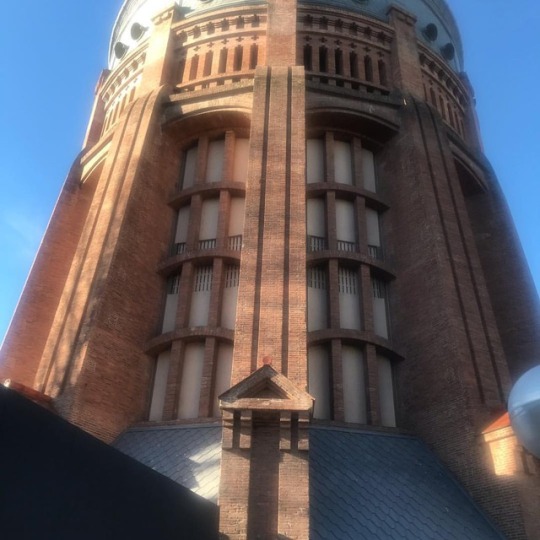
“Modus. A la mantes de Espana’ .... January 2019 #madrid #fashionexhibition #mylife #myMadrid #mylove #photo #photography #photographers #instagramers #lifeofawriter #lifeofaconsultant #fashionista #fashiondiaries #athomeintheworld #dametraveler #traveldeeper #makingtheimpossiblepossible #myworld🌎 A private tour of legendary Spanish designers ( Balenciaga, Fortuny, Paco Rabanne and contemporary ones that I’ve had the pleasure to see on Madrid catwalks and write about) to famous international designers like Givenchy, John Galliano and Dries Van Noten who have been inspired in their work with those unique Spanish motifs. (at Sala Exposiciones Canal De Isabel Ii) https://www.instagram.com/p/BtNwc8Ghl84/?utm_source=ig_tumblr_share&igshid=1isax1hwfsxrs
#madrid#fashionexhibition#mylife#mymadrid#mylove#photo#photography#photographers#instagramers#lifeofawriter#lifeofaconsultant#fashionista#fashiondiaries#athomeintheworld#dametraveler#traveldeeper#makingtheimpossiblepossible#myworld🌎
0 notes
Photo
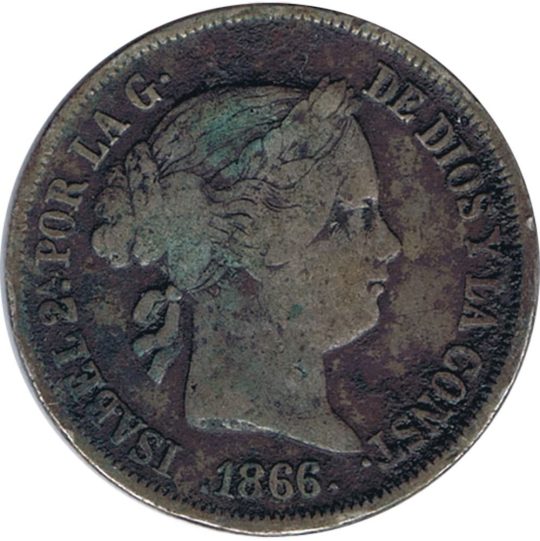
Moneda de España Isabel II 40 Centimos de Escudo de 1866 ceca Madrid. 15,00 €. 40 cts Escudo 1866 En el Reverso el escudo con corona real y la leyenda “REINA DE LAS ESPAÑAS” y 40 CENTs DE ESCo. En el anverso, Isabel II con la leyenda “ISABEL 2ª POR LA G. DE DIOS Y LA CONST.” 1866. Composición: Plata 810 milésimas. Peso: 5,2 gr. Diámetro: 23 mm Categoría: Monedas Isabel II. Más información en: https://www.todonumismatica.com/moneda-de-espana-isabel-ii-40-centimos-de-escudo-d-25939.html
0 notes
Text
Hablando de mujeres claves para la igualdad
Buenas a todos, lo primero que voy a hacer es una breve presentación de mi personaje elegido a destacar para el reto de historias de mujeres olvidadas o no suficientemente reconocidas. La he elegido porque tiene que ver con tres de mis hobbies preferidos: la lectura, la radio y las series. Soy aficionado a la radio y me gusta escuchar podcast de varios programas que me gustan, uno de ellos se llama “Historia de Aragón”. Esto me lleva siempre a consultar determinados fragmentos de historia y esa curiosidad me llevo a conocer la serie de TVE: Isabel.
Por eso, elijo como personaje con historia olvidada a Isabel I de Castilla, más conocida como Isabel la Católica. Una mujer muy importante para la historia de España, que vivió hace más de 500 años y llegó a ser reina de Castilla, reina consorte de Aragón (que incluía Valencia, Mallorca, Cerdeña, condesa consorte de Barcelona), señora de Vizcaya, reina consorte de Sicilia, reina consorte de Nápoles y reina catolica, título otorgado por el Papa y que pasarían a utilizar en adelante la mayoría de reyes en España. Todo ello en un mundo de hombres.
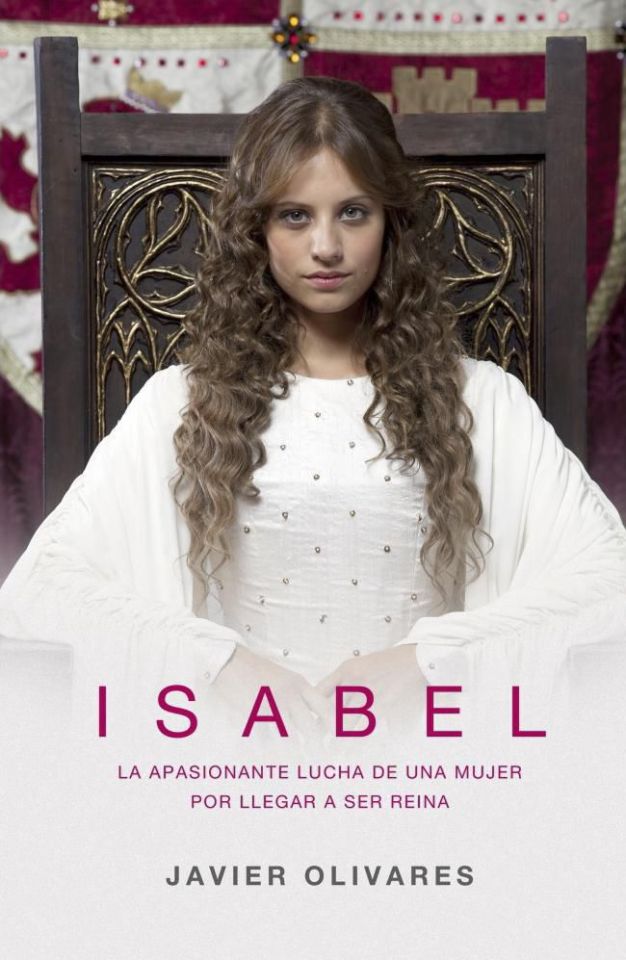
* Serie Isabel de TVE. Dicho esto, continuaré con una breve biografía de Isabel. Lo primero, nació en 1451, hija del Rey de Castilla y de su segunda mujer. En la línea sucesora tenía por delante un hermano mayor de padre y un hermano menor, por lo que no estaba destinada a reinar. Si, entonces como ahora, el hombre estaba por delante en el orden de sucesión. Pues aún así, consiguió reinar en Castilla con la ayuda de su marido, Fernando II de Aragón, Fernando el Católico. Con su boda consiguió unir esos dos grandes reinos, Castilla y Aragón, y juntos consiguieron reconquistar toda España y liberar Granada para la cristiandad. Pero aunque los dos fueran reyes, en Castilla Fernando era el rey consorte, papel humillante en eso tiempos, y la que tomaba las decisiones era ella. Por si eso fuera poco, fue la única que confió en el entonces desconocido Cristóbal Colón y financió sus viajes que acabaron con el descubrimiento de un nuevo mundo, América.

¿Por qué creo que Isabel ha contribuido a construir sociedades igualitarias y/o por qué me parece importante poner en valor esta figura?
Porque para mi, la mejor forma de contribuir a algo son con hechos. Isabel fue Reina en un mundo de hombres, casándose con quien ella quiso y no quien le querían imponer. Se encargó de tener mujeres cerca a las que bien escuchaba a la hora de tomar decisiones y fue capaz de descubrir un nuevo mundo en el que lucho porque los indígenas tuvieran los mismos derechos que el resto de habitantes de Castilla prohibiendo su exclavitud. Además, inspiró a su marido que en su primer testamento suprimió en Aragón la clausura que excluía a las mujeres de la sucesión del trono. Además trajo la paz interna en la península así como una forma de gobierno con dos reyes que reinaban cada uno en sus territorios pero conjuntamente y respetando ciertos principios y fueros y con asesoramiento de consejos especializados. Parece que no solo yo veo esta figura como clave en la igualdad de hombres y mujeres en nuestro país y en medio mundo. En el libro “Eso no estaba en mi libro de historia del imperio español”, de Pedro F. Barbadillo, nos habla de un imperio cuya bandera, la cruz de Borgoña, ondeó en barcos, ciudades y castillos de todo el planeta; con especial atención a la estadista más feminista y antirracista de la Historia: Isabel la Católica, la primera que impuso cuotas de participación de la mujer; que creó leyes iguales para todos los ciudadanos; que prohibió el esclavismo; que legisló los matrimonios interraciales; que legisló para que un hombre que fuera a América no pudiera dejar abandonada en España a su esposa; bajo cuyas enseñanzas se otorgaron los primeros permisos de maternidad.
Yo no estoy nada de acuerdo en la costumbre actual de mirar con nuestros ojos del siglo XXI las cosas que sucedían o se realizaban tanto tiempo atrás que están llevando a querer rectificar la historia crucificando personas por sus actos tan mal vistos con nuestros ojos de ahora, ojos muy tendencieros y partidistas. Hablar hoy en día que tal persona era feminista hace 500 años según el análisis de no sé quién, me niego a aceptarlo. Hace 500 años se hac��a y se vivía de otra manera, era una vida más dura, más corta, ciertamente machista, sin grandes derechos para el pueblo llano. No se puede comparar lo que pasaba hace 500, 1000 o 2000 años, con lo que se hace hoy, y menos tan a la ligera. Esta mujer se convirtió en un mito, y por los cronistas de la época se ve que fue muy querida y respetada, incluso en lo que ahora es Cataluña. Fue puesta de ejemplo como buena gobernanta en otras dinastías y trajo un tiempo de esplendor a la península ibérica. Pero aún viendo lo que hizo, creo que esta mujer no se ha tomado en consideración como ejemplo de feminismo ni de igualdad, cosas bien distintas, porque era un personaje con unas características que no dan el perfil necesario para el pensamiento feminista dominante en la actualidad, especialmente por su gran religiosidad. Buscando documentarme veo que también es una opinión compartida. El historiador Rafael María Molina por ejemplo opina lo siguiente: “No es exagerado decir que Isabel tal vez haya sido la mujer, que, en los últimos mil años más ha influido en la historia universal, pues tuvo una relevancia decisiva en el Descubrimiento de América. Fue un ejemplo de valentía femenina, determinación y carácter, se casó con quien quiso sin someterse a imposiciones, se negó a dejarse manejar y mostró un talento político que la llevó al trono e hizo doblegarse ante ella a muchos hombres. Y todo ello siendo adolescente o muy joven.
Sin embargo y a pesar de la exitosa serie de TVE sobre ella de hace algunos años, Isabel la Católica es un personaje políticamente incorrecto para el feminismo oficial, que no soporta su religiosidad y prefiere admirar a actrices, cantantes o figuras de tercera o cuarta categoría como Frida Kahlo”.
El camino se recorre caminando, si queremos cambiar las cosas debemos de hacerlo con el ejemplo. Menos palabrería barata y buenismo, y más hechos. La igualdad, en la España del siglo XXI, tiene que ser la lucha por el mantenimiento de la igualdad lograda de todos y todas ante la ley, con la necesidad de tener los mismos derechos y obligaciones. No se puede intentar conseguir que los que antes tuvieran más derechos ahora tengan que pagar conformándose con menos. La igualdad no puede ser diferenciación de derechos y obligaciones, eso si, igualdad pero respetando la diversidad tanto de raza, sexo, religión, etc.
Espero que os haya gustado mi pequeña contribución. Os dejo las fuentes consultadas:
Podcasts Historia de Aragon de Aragón Radio.
Serie Isabel de TVE.
Wikipedia: Isabel I de Castilla
Biblioteca Virtual Miguel de Cervantes
El libro “Eso no estaba en mi libro de historia del imperio español”, de Pedro F. Barbadillo
https://somatemps.me/2021/04/20/22-de-abril-de-1451-nace-isabel-la-catolica-la-mujer-que-cambio-la-historia-de-espana-y-del-mundo/
Gracias por leerme. ¡Nos leemos!
0 notes
Photo
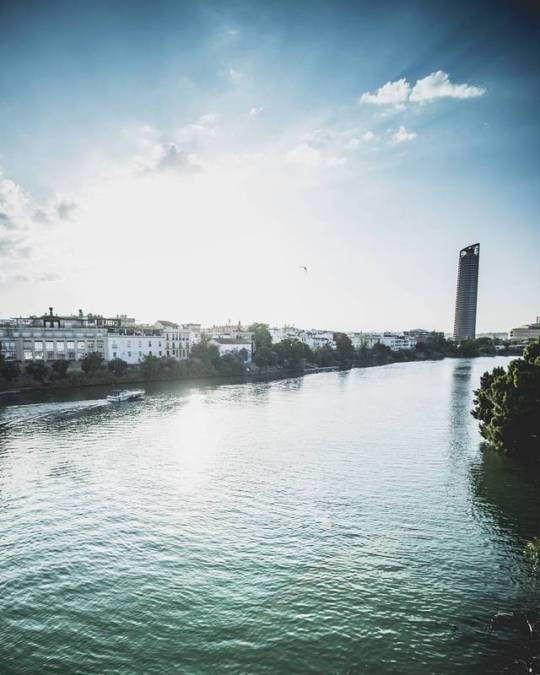
The tower. #river #guadalqyivir #sunshine #sun #sunsets #espana #españa #spain #sevilla #seville #travel #travelgram #travelphotography #boat #tower #downtown #riverside #waterfront #discover #explore #cityscape #ciudad #citytour #cityhopper #greek #september #summerisover #latergram #holidays (at Puente de Isabel II)
#september#travelgram#sun#riverside#sunsets#travelphotography#travel#explore#seville#guadalqyivir#españa#cityscape#waterfront#downtown#river#spain#sunshine#citytour#cityhopper#tower#greek#latergram#boat#sevilla#ciudad#summerisover#holidays#espana#discover
0 notes
Text
Nueva publicación en CONTRALINEA.COM.MX |
Nueva publicación en Contralínea: http://www.contralinea.com.mx/archivo-revista/index.php/2017/04/28/la-corrupcion-acorrala-a-derecha-gobernante-en-espana/
La corrupción acorrala a derecha gobernante en España
Madrid, España. El presunto desfalco de millones de euros en la empresa de aguas Canal de Isabel II puso contra las cuerdas al gobierno conservador español de Mariano Rajoy, asediado por un sinfín de casos de corrupción. Por enésima vez en los últimos meses, la imagen del derechista Partido...
0 notes